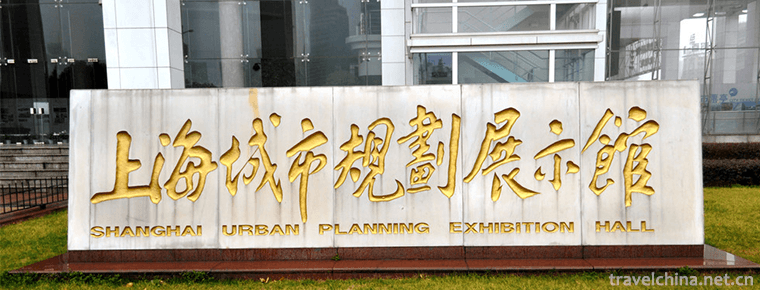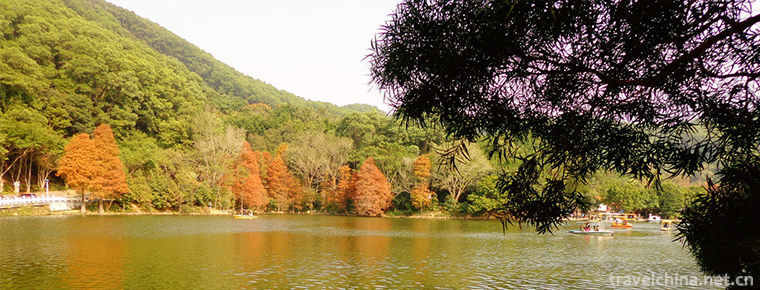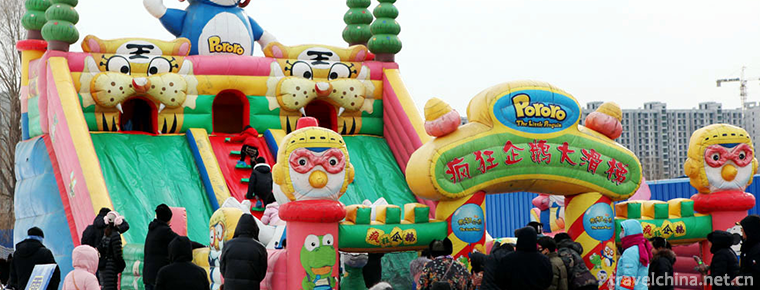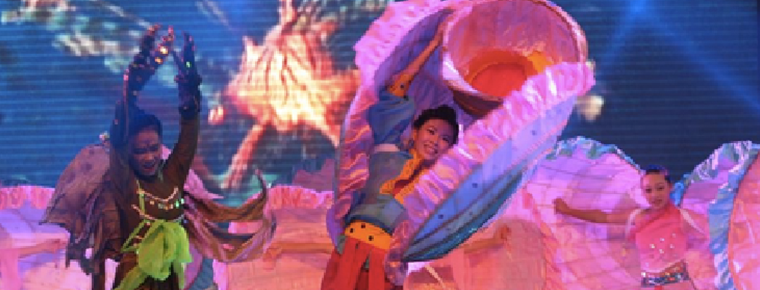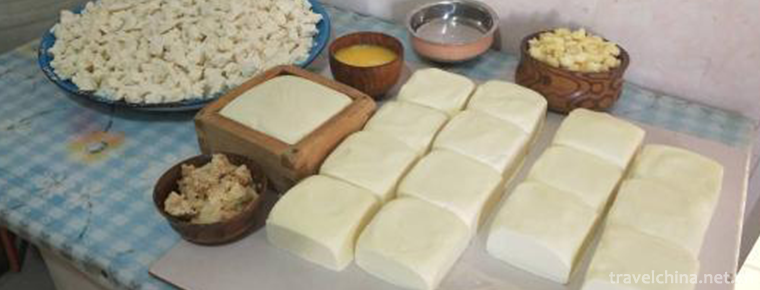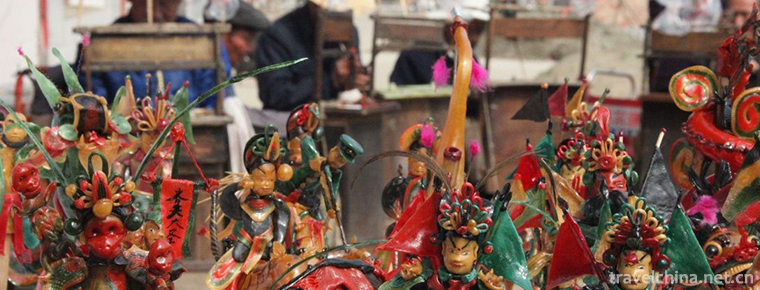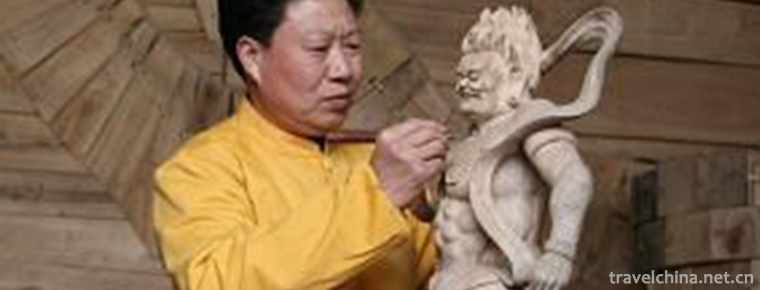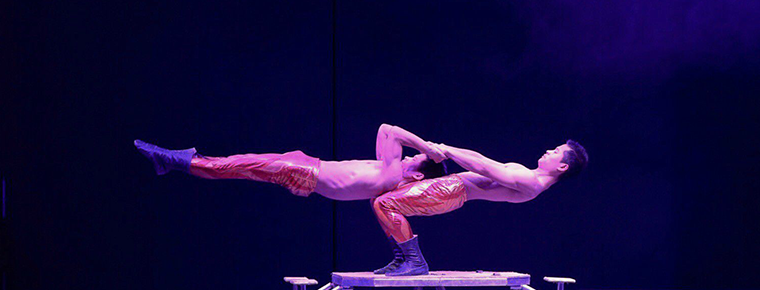Zijin Mountain Scenic Area
Zhongshan Scenic Spot, or Zhongshan Scenic Spot for short, is located in Zijin Mountain, Xuanwu District, Nanjing City. It is a famous scenic spot in China, the first batch of national scenic spots, the first batch of national 5A scenic spots, National Forest parks, national civilized scenic spots and forty top scenic spots in China.
Zhongshan Scenic Area is centered on Zhongshan Mausoleum and supported by Ming Xiaoling Mausoleum and Linggu Temple. It has over 200 scenic spots and 84 scenic spots for sightseeing. Among them, there are 1 World Heritage Site, 15 National Key Cultural Relics Protection Units, 31 Cultural Relics Protection Units in Jiangsu Province and Municipal-level Cultural Relics Protection Units. The scenic spots are divided into five parts: Ming Xiaoling scenic spot, Zhongshan Mausoleum scenic spot, Linggu scenic spot, Toutuoling scenic spot and other scenic spots.
Zhongshan is also named Zijin Mountain because of its frequent purple clouds at the top of the mountain. Zhongshan and Houhu depend on each other, laying the foundation of Nanjing's innate shape. In the meantime, the dragon, the tiger, the landscape city and the forest are all in one, which can be regarded as the highlight of Nanjing's landscape humanities. Therefore, Zhuge Liang praised Zhongshan Longpan, Stone Tiger, and the residence of the emperor.
Zhongshan stands on the Yangtze River with the trend of "Dragon Pan", drinks sunshine and swallows mist. After thousands of years, it has been lush and lush. The emperors and heroes of the Number Dynasty, the pines and cypresses, blend multi-cultures and several kinds of natural craftsmanship, and stand out among the mountains. The culture of the Six Dynasties, the Ming Dynasty, the culture of the Republic of China, the forest culture of Shanshuicheng, the ecological leisure culture and Buddha are included. Religious Culture Series in one mountain is "the first humanistic mountain in the city of China".
Zhongshan has a magnificent meteorology and superior terrain. Since ancient times, it has blended with the prosperity and decline of Nanjing.
The great changes and developments in politics, economy, military affairs and culture of Nanjing, the ancient capital, have left abundant deposits in the area of Zhongshan, with clear marks. Since Sun Quan, the first emperor of the Six Dynasties, Dongwu, Zhongshan has become the burial place of the emperor's mausoleum and honorary officials; since the beginning of the Six Dynasties, Zhongshan has been a Buddhist resort in the east of the Yangtze River; from the Six Dynasties to modern times, Zhongshan has been a place for military strongholds and military strategists to contend for; from ancient times to present, how many literati and refined scholars have traveled Zhongshan and left behind a great reputation. In particular, during the 1911 Revolution led by the peasant uprising leader Hong Xiuquan and the great democratic revolutionary forerunner Sun Yat-sen, how many tragic and tragic battles took place in Zhongshan, and how many heroes fought in Zhongshan.
Zhongshan, with its numerous cultural landscapes, has a rich collection of sceneries from past dynasties, and is full of beautiful scenery, scattered and delicate, which is reflected in the green pines and cypresses.
Zhongshan, the pride of the ancient capital Nanjing, is the sacred place of the ancient capital Nanjing.
Zhongshan scenery, when Mr. Sun Yat-sen's mausoleum and its affiliated memorial complex for the most. Zhongshan Mausoleum, located on the south slope of Maoshan Mountain in Zijin Mountain, is designed by Lu Yanzhi, a famous Chinese architect. It is solemn, simple and innovative. The overall situation of the cemetery is "alarm bell" pattern, which implies the meaning of "making the world reach the Tao".
The construction of the mausoleum began in January 1926 and ended in Fengan Dadian on June 1, 1929. The main project lasted more than three years, and the whole mausoleum project was completed in the second place in 1931.
Surrounding the main building of Zhongshan Mausoleum, there are also a series of memorial buildings, such as Yongmulu built above the mausoleum for the convenience of the family members of Dr. Sun Yat-sen, Fengan Memorial Hall storing Memorial items of Fengan Dadian, Baoding, Music Platform, Liuhui Pavilion, Yangzhi Pavilion, Guanghua Pavilion, Xingjian Pavilion, Tibetan Sutra Building and so on. People from all walks of life and overseas Chinese donated money to build it in memory of Dr. Sun Yat-sen. To commemorate Dr. Sun Yat-sen, Zhongshan Botanical Garden and Greenhouse of Cemetery have been established in Zhongshan Mausoleum Park.
On both sides of Zhongshan Mausoleum, there are some influential figures in the period of modern democratic revolution, such as Mr. Sun Yat-sen's close comrades-in-arms and Kuomintang politicians.
In 1928, the National Government of the Republic of China decided to rebuild the cemetery of the deceased soldiers of the National Revolutionary Army at Linggu Temple on the east side of Zhongshan Mausoleum, and to build additional Memorial archways, memorial halls and memorial towers.
In the memorial hall rebuilt by Wuliangdian Hall of Linggu Temple, the names and ranks of soldiers killed in the Northern Expedition and the Anti-Japanese campaign were engraved. It is estimated that there were 10 monuments engraved at that time, with more than 33,000 names.
At the north foot of Zhongshan Mountain, there is also a solemn air martyr cemetery with the names of 3306 martyrs from China, the United States and the Soviet Union who died in the fight against Japan inscribed on the gravestones.
In front of and behind Zhongshan Mausoleum complex is the Ming Xiaoling complex. The Ming Xiaoling Tomb is the tomb of Zhu Yuanzhang, the founding emperor of the Ming Dynasty, and the empress Mahjong. The mausoleum covers a vast area with a perimeter of 22.5 kilometers. From Xiamafang to Dulong Fubao City, it is 2.5 kilometers deep. It is the largest Mausoleum of the Ming Dynasty.
The whole building complex is divided into two parts: from Xiamafang, through the banned monument, martyr monument, Dajinmen, Shengong Shengde monument pavilion, Royal River Bridge, Shixiangsheng, Shiwangzhong, Shiwengzhong to Weixing Gate, it is part of the Shidao that Xiaoling guides.
The main buildings of the cemetery are Jinshuiqiao, Wenwu Fangmen, Xiaoling Gate, Xiaoling Hall, Neihongmen, Fangcheng Ming Building and Baocheng.
The underground palace is under the treasure city. The Shinto of Xiaoling Mausoleum in Ming Dynasty is 2,400 meters long, with deep twists and turns. The central turning point is the Meihua Mountain where Sun Quan's mausoleum is located. The Shinto goes around the foot of the mountain in the shape of S, which is quite different from the open and direct Shinto system in front of the mausoleums of emperors of all dynasties.
Although all the wooden structures on the ground of Xiaoling Mausoleum in Ming Dynasty were destroyed by soldiers, their overall layout was magnificent, and there were still magnificent buildings with clear patterns and superb skills. Especially the unearthed tombs of Empress Taizu and Mahqueen of Ming Dynasty are more mysterious, rendered by folk legends such as Zhu Yuanzhang's burial for hundreds of years and 13 castles in Nanjing. Zhu Yuanzhang, Taizu of the Ming Dynasty, chose his own site to build a large-scale Ming Xiaoling Mausoleum in the Yangdu of Zhongshan. He also buried the Yin of Zhongshan Mountain to the founding ministers who followed him in the Baizhan Sand Field and founded their founding businesses, thus forming the layout of "ministers of various peaks outside the mountain".
Historical records show that Zhongshan Zhiyin buried more than 10 founding ministers in the early Ming Dynasty, with monuments and trees joined by Pituo. Up to now, the tombs of King Xuda of Zhongshan, King Changyuchun of Kaiping, King Li Wenzhong of Qiyang, King Wuliang of Jiangguo, King Wuzhen of Haiguo, and King Qiucheng of Anhui are basically well preserved. Stone animals scattered, Weng Zhongzaochen.
Among Zhongshan scenery, Buddhist temple architecture has the longest history. During the Six Dynasties, there were more than 70 temples in Zhongshan, and there were many temples in the Vatican Palace. Years of vicissitudes, successive dynasties have flourished and failed, so far only the Linggu Temple in the left of the mountain still has a scale. Especially in Linggu Temple, the innumerable hall is tall and full of bricks, and does not need inches of nails and pieces of wood. For this reason, it is also called the No Beam Hall, which is the earliest and largest of the existing similar buildings in China.
Most of the other temples in Zhongshan are abandoned, such as Da Ai Jing Temple built at the top of Zhongshan Mountain in the first year of Emperor Wudi Liang (520), which is the most magnificent. Emperor Xiao Yan of Liang Wudi once visited poetry and Prince Xiao Tonghe of Zhaoming. The monastery was destroyed by war and remains are still visible today. The existing religious buildings in Zhongshan, such as Wuliangdian, Baogong Pagoda, Zhigong Dian and Dinglin Temple, are all important historical relics, which can only be rebuilt by future generations. However, between the top of Zhongshan Mountains or the half-mountain valleys, decadent ruins and ruins of ancient temples can be seen from time to time, and the prosperity of Zhongshan Buddhist temples in the Six Dynasties can be seen.
The cultural relics of Zhongshan are also quite distinctive. As far as inscriptions are concerned, the great painter Wu Daozi, the great poet Li Bai, and the great calligrapher Yan Zhenqing wrote the praise tablets of Baozhi monks. They are known as the "Three Great Steles". They were originally built in Dulongfu, Zhongshan, and later moved to the present site with Linggu Temple. The Yangshan Monument near Fentou Village, namely Zhu Di, the ancestor of Ming Chengzu, ordered to be excavated. It was originally intended to be used as a monument to carve the sacred and virtuous monument of Xiaoling Mausoleum. The monument's size, body and pedestal are enormous, 73 meters high and its total weight is 15,000 tons, which can be called "the world's monument".
On the third peak of Zhongshan Mountains, China's first modern astronomical observatory is built. It also preserves precious cultural relics such as turbidity instrument, simple instrument, celestial sphere instrument and standard watch, which are the oldest astronomical instruments in the world. In addition, Prince Liang Zhaoming Reading Platform on the north peak of Zhongshan Mountain, cliff inscription of Dinglin Temple in Zhongshan Mountain in the middle reaches of Lu You-yu, a famous patriotic poet of the Southern Song Dynasty, and Taoist "Thirty-first Cave Heaven", where Zixia lived in seclusion in the Ming Dynasty, are all scenic spots of Zhongshan Mountain with strong cultural flavor.
Nanjing is a famous ancient capital and national historical and cultural city in China. In its construction history of more than 2600 years, especially in the Six Dynasties, the early Ming Dynasty and modern times, it is the three golden periods in its historical development process. The historical sites and memorial buildings left in Zhongshan are also the most prominent in these three periods. Zhongshan scenery is the witness of Nanjing's long history.
Opening Hours
7:00 - 18:30
Best time: Nanjing is a subtropical monsoon climate, with an average annual temperature of 15.3 C, annual precipitation of 1106.5 mm, and a plum rain season from mid-June to early July. Nanjing used to be known as a "stove". The extreme maximum temperature in July-August sometimes reached 40 degrees Celsius, and generally around 35 degrees Celsius. However, Nanjing is a national advanced city with greening rate in urban areas exceeding 30 percent. Therefore, more and more people visit Nanjing in summer. "Hot summer and cold winter" is a remarkable climatic feature that Nanjing has compared with other cities in the south of the Yangtze River. It usually snows most in December. If you have a chance to encounter heavy snow in Nanjing, it is also fascinating, the snow scenery in the south of the Yangtze River is more charming and moving.











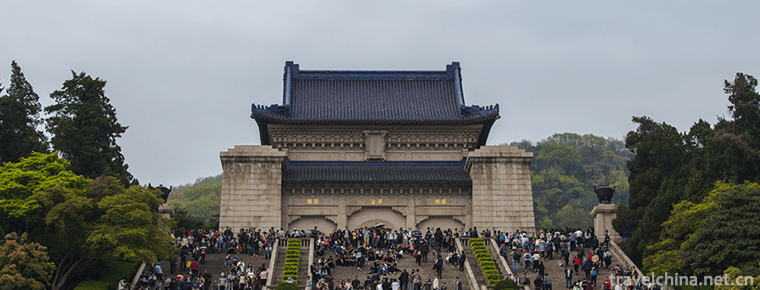
-
Mingyue Mountain
Mingyue Mountain: National tourist resorts, National Scenic spots, national AAAAA tourist attractions, National Forest parks, national geological parks, National Natural heritage, home of hot springs .
Views: 214 Time 2018-12-08 -
Shanghai Urban Planning Exhibition Hall
The Shanghai Urban Planning Exhibition Hall was completed in early 2000 and opened to the public on February 25, 2000. As an important window for Shanghai's external publicity, Shanghai .
Views: 129 Time 2018-12-19 -
Fairy Lake Xianhu Botanical Garden
Xianhu Botanical Garden is located in Liantang Xianhu Road, east suburb of Luohu District, Shenzhen. It relies on Wutong Mountain in the East and Shenzhen Reservoir in the west..
Views: 119 Time 2018-12-22 -
Chaoyanggou tourist attraction
Chaoyanggou Scenic Spot in Hebei Province is one of the 30 most beautiful scenic spots in China, including AAAA-level scenic spots, National Geological Forest Park, National Rural Tour Demonstration S.
Views: 107 Time 2019-01-05 -
Baiyundong Tourist Area Kongshan
Baiyundong in Kongshan Mountain is a national key scenic spot, National Geological Park and national AAAA level scenic spot. Located in Lincheng County of Xingtai City.
Views: 179 Time 2019-01-29 -
Crab Island
Crab Island Green Eco-Resort is based on agriculture, characterized by villages, with environmental protection, green, organic and healthy as the solid connotation of tourism and vacation. .
Views: 126 Time 2019-02-25 -
Stories of Marine Animals
Marine animal stories are mainly handed down orally. The traditional folklore stories circulated in the islands for a long time have been formed and disseminated in Dongtou.
Views: 274 Time 2019-05-02 -
Dairy Products Production Techniques
Mongolian phonetic translation. Mongolian drinks. Also known as "white food", that is, dairy products. Milk, mare's milk, goat's milk, camel's milk, cream of milk skin, cheese, dried milk, s.
Views: 131 Time 2019-06-07 -
Sugar plastic
Sugar sculpture, one of the traditional folk handicraft products, commonly known as sugar blowing, sugar manikin, engaged in this trade called sugar blowing people, throughout the country, especially .
Views: 360 Time 2019-06-18 -
Skills of Dry Lacquer and Ramie in Tiantai Mountains
As early as the Eastern Jin Dynasty, dry lacquer and ramie had been used in Tiantai folk. Through the continuous efforts of the substitute craftsmen, their skills gradually matured. In the mid-Tang Dy.
Views: 194 Time 2019-06-21 -
Wuqiao acrobatics
Wuqiao acrobatics is a traditional folk acrobatics art in Hebei Province. Referring to the "acrobatics town" people are often referred to as Wuqiao County, Cangzhou City, Hebei Province. Acc.
Views: 120 Time 2019-06-29 -
Fobao scenic spot
Fobao scenic spot, located 128 kilometers southeast of Sichuan Province, is located in the southern edge of Sichuan Basin. It is a primeval forest area at the tail of the North vein of Dalou mountain. It covers an area of 380 square kilometers. It has the characteristics of mountain, water, stone and forest. It is a subtropical humid climate with superior natural conditions and well preserved vegetation..
Views: 171 Time 2020-10-16

